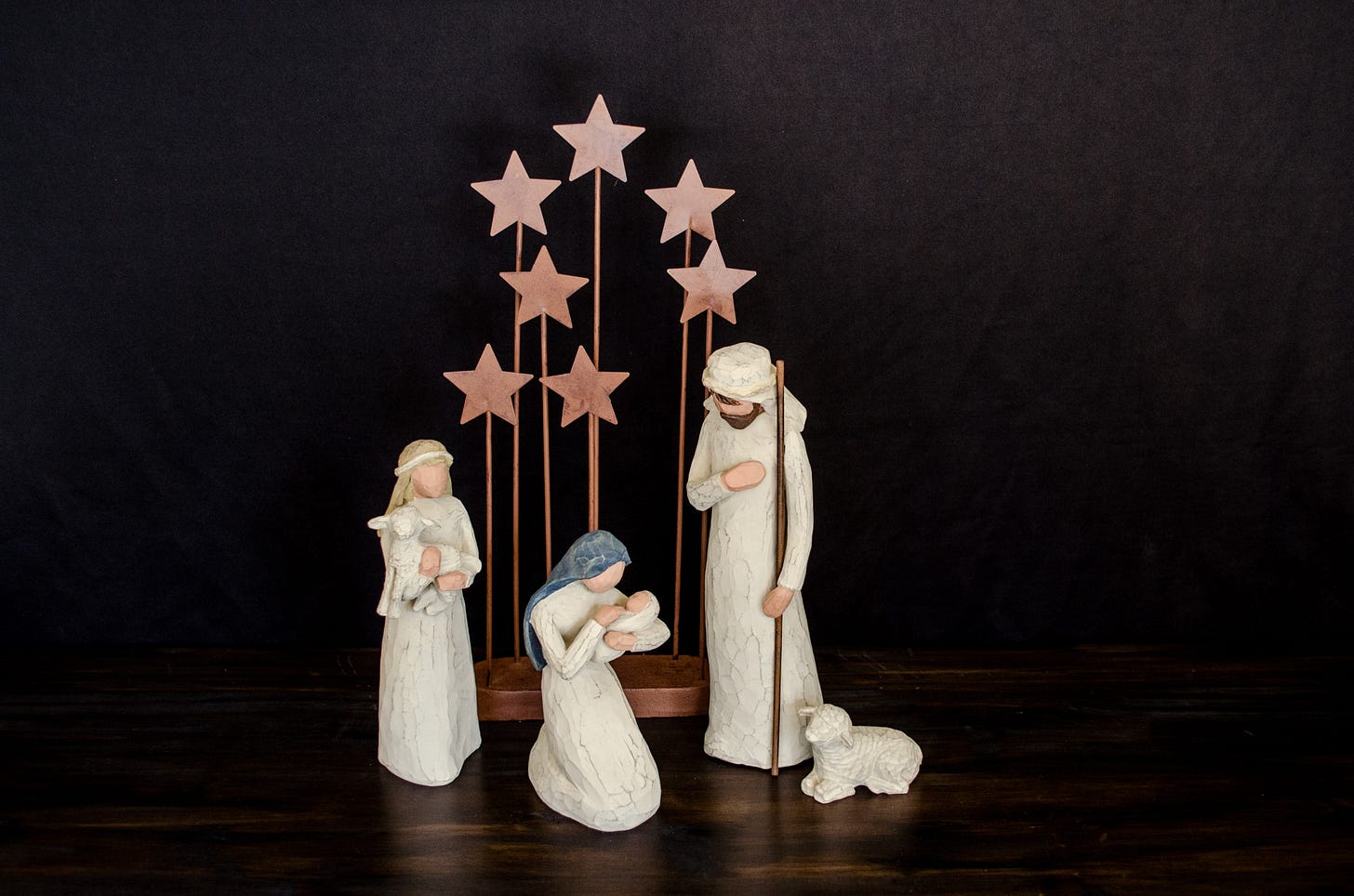The living God lies in a manger.
The immensity of Christmas can never be overstated.

I genuinely love Christmas. Reasons abound to adore this holiday season. I, most of all, love the carols and the hymns, and the immense meaning and hope they offer. It’s rather ironic that some of the most beloved hymns within the church are kept tucked away for eleven months out of the year. Perhaps that shouldn’t be, though. I’ve often bemoaned the notion that preaching on the Incarnation is only allowable during Yuletide. “Incarnational preaching,” as it were, is a year-round anthem that ought to reverberate from pulpits just as loudly in July as in December. The Incarnation of God in Jesus Christ is the crux of our Christian faith and is wonderfully articulated in colorful ways through countless Advent antiphons.
I do believe that you and I can’t reflect too much on, nor can we over-exaggerate, the implications of the Incarnation. It is the fact of all facts, the truth of all truths, the glory of all glories, that God himself has descended to take on human flesh. Heaven’s royalty has taken on skin and bone. The Creator has inserted himself into the canvas he spoke into existence. It’s marvelous, indeed, to celebrate during Christmastide the coming of the Lord our Savior. He is, as Rev. Horatius Bonar proclaims, the “Christ of God.” Listen as he explores the wonder of the Living God lying in a manger:
God Himself has taken the side of man; yea, has become man, that He may accomplish man’s deliverance. The incarnation is certainly not the whole of the mighty undertaking. It is but the beginning. Yet it is a wondrous pledge of love. He who came, on man’s account, from the throne of God to the manger of Bethlehem, must love man with no common love. He cannot have ceased to care for earth; He cannot have had His love quenched by rebellion, nor turned into coldness by the unworthiness and unlovableness of its objects.
Here, then, we learn at Bethlehem that God is love: for it is God whom we see in the manger. We hear that a child has been born. We come to its cradle; and we find that God is there. It is “the Word made flesh” that lies there. The brightness of Jehovah’s glory and the express image of His person is there. That cradle gives us God’s thoughts of God, what God wishes us to know and think about Himself. It shows us how accessible God is, and how He wishes to be approached by us. It shows us how near He has come to us, how low He has stooped, how truly one with us He has become. It is God, the Son of the living God, very God, who lies there. We see but helpless infancy; yet the mighty power of God is there. We see but clouds and shadows resting over us; yet on His forehead is written, “God is light, and in Him is no darkness at all” (1 John 1:5). The more that we can realize of God in connection with that babe and that cradle, the more we shall know of Him who said, “My thoughts are not your thoughts” (Isa. 55:8). Here God speaks to us, and we to Him. These little fingers are those of Him who was ere long to touch the sick, and to heal them with His power. These hands are the hands which are soon to be pierced with nails. That head is soon to be crowned with thorns. These feet are to be fastened to the cross. These eyes are to weep at the grave of Lazarus and over Jerusalem. That body which now lies in a stony cradle, is soon to lie in a stony tomb. And yet all these things link themselves with His Godhead. The Son of the living God is here; and Jesus of Nazareth is He, the very Christ of God. (73–75)
The immensity of Christmas, you see, can’t be overstated. Laying in Bethlehem’s cradle is the Lord of all glory and grace. The “infinite infant God” is here to put death to death (Matt. 1:21–23). Christ has come! God is with us, our great Emmanuel!
Merry Christmas, friends.
Works cited:
Horatius Bonar, The Christ of God (London: James Nisbet & Co., 1874).


